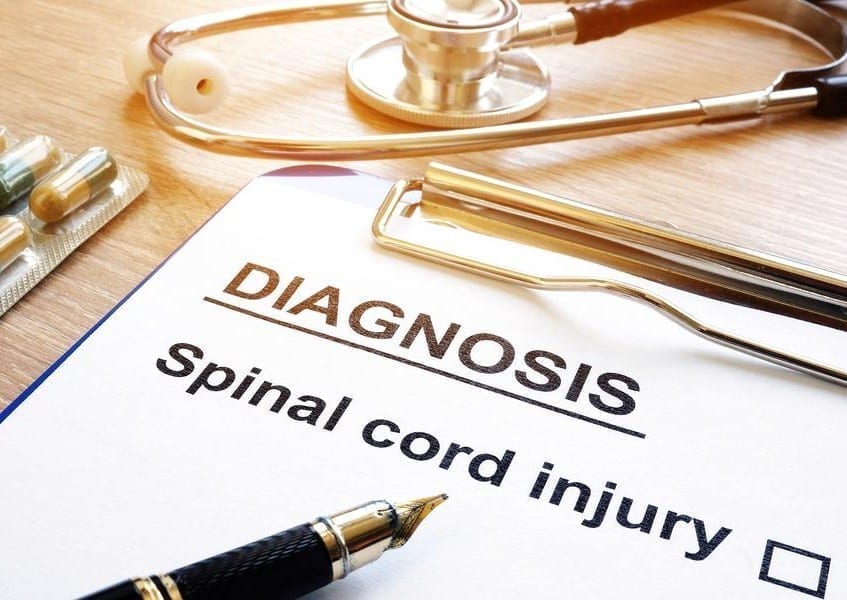Health and Wellness News
How Cannabis Use Helps Spinal Cord Injury Victims
Victims of spinal cord injury (SCI) have self-medicated with cannabis for centuries. They may not have made the connection between cause and treatment. But, they were happy to be relieved of pain.
Spinal cord injuries take many forms, have many causes, and mingle with other conditions, so diagnosis can be difficult and treatment more problematic. If cannabis works, it’s worth considering how it works and the pros and cons of use.
The nature of the spinal cord
The spinal cord has five functional areas where the vertebrae are stacked in a column through which the spinal cord threads:
- Cervical spinal cord: The brain connects to the spinal cord at the neck with vertebrae descending from C8 to C1.
- Thoracic spinal cord: Vertebrae descend from T12 to T1 to form the middle section of the spine.
- Lumbar spinal cord: Vertebrae L5 to L1 form the section where the spine curves inward.
- Sacral Spine: The sacral region has five more vertebrae bending outward to protect nerve roots that extend from the spine.
- Coccygeal region: The tailbone is a single vertebra at the base of the spinal cord.
These vertebrae are vulnerable to injury and other conditions—directly and indirectly to injury individually or in combination. It can be much more complicated than the basic injuries: complete and incomplete spinal cord injuries:
- Complete spinal cord injuries sever the cord radically affecting human function.
- Incomplete spinal cord injuries partially sever the cord affecting various bodily functions.
While the therapy may improve the human functions and physical potential, the injuries may lead to chronic pain, anxiety, depression, headaches, insomnia, and more.
“Every year, an estimated 11,000 SCIs occur in the U.S. Most of these are caused by trauma to the vertebral column, thereby affecting the spinal cord’s ability to send and receive messages from the brain to the body’s systems that control sensory, motor and autonomic function below the level of injury” (American Association of Neurological Surgeons).
Standard treatments
Treatment for SCI varies according to the severity. Most SCIs cannot be repaired, so therapy regimens focus on workarounds. For example, therapy might strengthen or rehabilitate affected limbs and muscles.
But, practitioners must also address related symptoms. They typically prescribe medications for pain, depression, headaches, and insomnia, including addictive opioids and/or drugs with serious side-effects. And, some therapies recommend meditation, yoga, and support groups.
What cannabis can do
Cannabis cannot cure or repair spinal cord injury. Still, it is known to have properties that affect neurology. Cannabinoids integrate with the human endocannabinoid system. As it does, it affects the transmission of signals along the central nervous system. They can effectively mute pain messages to the brain. They can directly and indirectly improve and balance the flow of signals. And, it can distract from other effects with stimulating and/or sedative properties.
In experiments on rats with spinal cord injuries, Neurotoxicity Research found, “Cannabidiol improved locomotor functional recovery and reduced injury extent, suggesting that it could be useful in the treatment of spinal cord lesions.” But, science is a long way from confirming such direct solutions. So, we are left to assess the effects of the cannabis strains we know.
- Blue Dream remains hugely popular among casual and medical users. It’s a Sativa-dominant hybrid bred from kush ancestors. It produces an invigorating and euphoric cerebral high thanks to its 21% THC. But, a pronounced CBD and CBN content also provides a deep sedation with lengthy pain relief to reduce stress and depression.
- Green Crack is a pure Sativa with up to 24% THC, 4.5% CBD, and 15% CBN. Its potency can leave you highly euphoric and energetic. It can be rough on new users, but it will boost creativity, stimulate appetite, and relieve stress and depression.
- Sour Banana Sherbet is a balanced Indica/Sativa blend. Like the others listed, it is high in THC (18-24%) which can edge to paranoia. An otherwise flavorful blend, Sour Banana Sherbet delivers a powerful cerebral punch followed by a deep sedating relaxation to combat pain, stress, and depression.
- Super Sour Diesel is a Sativa-dominant strain with up to 24% THC. It risks paranoia with its potent cerebral high. But, it does deliver lasting energy and pain control. It will leave you creative and socially active and works for use in the morning and throughout the day.
- OG Kush is a slightly Indica-dominant hybrid renowned for its 24% THC. Potent and earthy, it treats pain, depression, and anxiety. It will make your brain soar and then leave you lazy and couch-locked thanks to its high CBD and CBN measures.
What to look for in cannabis and spinal cord injury
You won’t find a cure for spinal cord injury in cannabis. However, it can provide relief in several ways:
- Potent cerebral effects will energize and stimulate SCI victims enough to better their day and social interaction by distracting from physical and psychological effects.
- Sedative effects will diminish the transmission of pain signals to the brain.
- The endocannabinoid system can refocus on the hormonal distribution necessary to general wellbeing.
There is also a risk of counter-productivity if cannabis use becomes chronic. Habitual use of powerful strains can exacerbate problems by discouraging exercise, physical therapy, and counseling. So, the best advice favors moderate recreational use and research into derivatives and edibles that might benefit individual cases of spinal cord injury.
Read more from the source: AllBud.com


